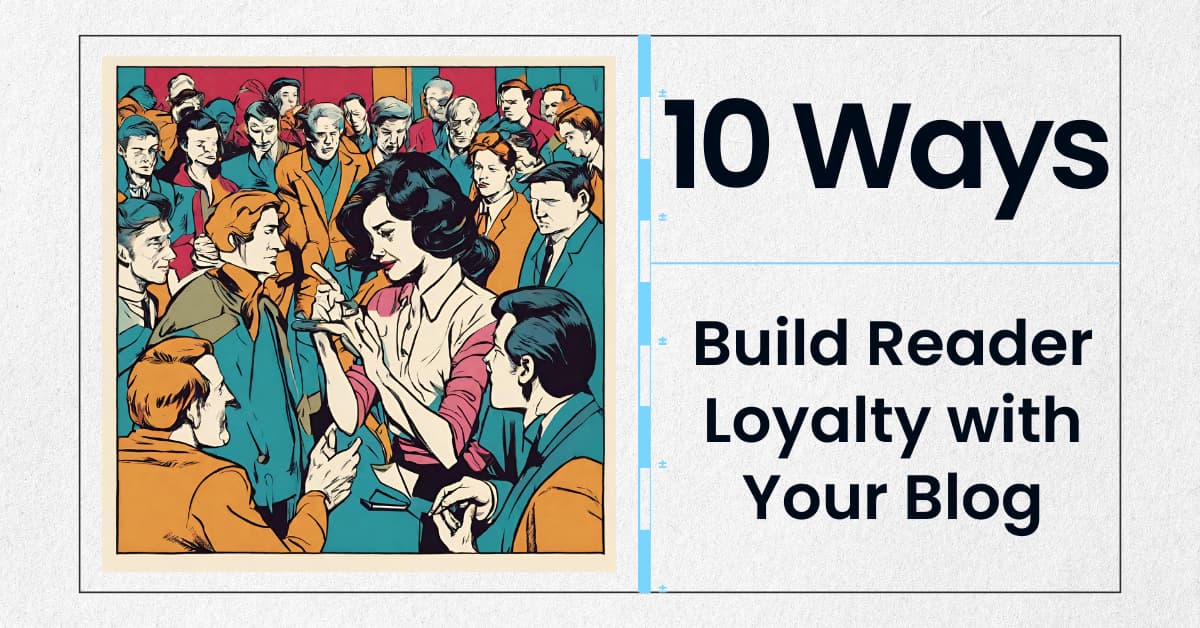Social media is not just an online place; it’s a busy market where gender plays a big part in your success.
If you’re growing a local shop online or improving your digital tactics, knowing these gender differences can mean the contrast between a missed chance and a thriving link with your audience.
Here, we break it down to the basics, offering you a no-nonsense guide to navigating the gender land of today’s top social platforms where every idea could unlock a new door to engagement and growth.
The Gender Landscape Across Top Social Platforms
Listen up, marketers, because understanding how your audience breaks down between the Mars and Venus crowds is crucial for any switched-on digital marketer.
I don’t care if you’re slinging makeup or motor oil, getting inside the heads of the guys versus the gals browsing your content makes all the difference between floundering and total domination.
Lets dive deep into the key gender differences on the big-three platforms, so you can start crafting targeted social campaigns that skyrocket conversions.
Gender Differences on Facebook
Even as recently as 2023, the majority of Facebookers are dudes – we’re looking at a 56/44 split in favor of the rougher sex.
And that male crowd peaks in the 25-34 bracket, making up almost 30% of male visitors. Comparatively, the fairer sex only hits 23% in that prime bracket.
So what are these insights telling us? Two things jump out:
1) Facebook has evolved way beyond keeping up with grandma nowadays. Its become a go-to place for guys in their money-making years to hang.
No surprise – the population getting rich quick off crypto and NFTs skews young and male.
2) The female visitors accessing Facebook do tend to be younger overall.
So, the first tip is to play up aspirational lifestyle imagery to captivate those impressionable young minds.
Everyone wants to feel they’re living their best life.
Now when we analyze behaviors, some definite gender differences shake out:
The ladies go gaga reacting to friends’ posts and stories with hearts and tears and such.
They also love sharing positive brand stuff when you @ mention them.
It’s like they joined Facebook for the community feels.
Contrast this with the masculine crowd who play it straight as an arrow, direct messaging networks for product suggestions instead of casual lurking and liking. And the dudes post way more news, politics, and brainy topics.
So what’s the playbook here based on the intel?
For the ladies:
- Go heavy on the visual storytelling – leverage real user images over stock photos.
- Foster that community feeling with inclusive, emotive messaging and nurture engagement.
- Encourage audience content creation and organic shares within their networks.
For the fellas:
- Laser focus on tangible product features and functional benefits.
- Back up claims with ample stats and validator testimonials from experts.
And for everyone:
- Cultivate an authentic brand voice vs corporate bot talk.
- Continuously monitor analytics to see what content plays best to different audience subsets and optimize accordingly.
Exploring Instagrams Gender Divide
Let’s explore some key user statistics for Instagram.
The platform boasts an almost equal guy/gal split with just slightly more men at around 51% of users.
But get this – once you hit the over-35 bracket, the pendulum swings towards women.
This tells us Instagram holds serious aspirational appeal with older ladies looking for lifestyle inspo.
Drilling down into behaviors, we again see some clear divergences emerge:
The ladies predominantly casually browse – scrolling feeds and double-tapping hearts on motivational #fitspo images or drool-worthy #foodporn. They tend to discover via hashtags and organically share user-generated content they love.
Contrast this with the dudes who exhibit more purchase-ready behaviors – following product tags, saving shoppable posts, and clicking clear calls-to-action at higher rates. If it can be bought, they wanna know.
So what’s our strategic playbook here based on the insights?
For the browsing Betties:
- Spotlight relatable user and influencer content.
- Curate imagery aligned with their aesthetic aspirations.
For the buying Bruces:
- Prominently showcase product tags and pricing.
- Create shoppable posts and reels with clear calls-to-action.
And for all users:
Balance between aspirational inspo imagery and real transparent representations.
Stay authentic to core values.
Continuously analyze your audience gender breakdown and fine-tune messaging accordingly.
Leveraging TikToks Blurred Gender Lines
While the old-guard platforms show lingering divisions, TikTok’s audience presents a remarkably equal gender distribution.
And get this – the actual content and themes resonating across those gender lines blurs as well. Both men and women are eating up an eclectic mix from comedy sketches to life hacks to cooking demos…you name it.
As Gen Z users continue collectively redefining gender norms on TikTok, marketers have unprecedented freedom to explore content themes once pigeon-holed. TikTokers value authenticity and innovation above all – deliver both in spades.
Even when overtly gendered topics do emerge organically, the representations continue evolving to avoid cringe stereotypes. Now we regularly see women proudly flexing sports talents or STEM skills while dudes highlight vulnerability and emotion.
Because of this fluidity, I’d avoid compartmentalizing content exclusively for men or women here.
The themes crushing it across the gender spectrum tend to be universally appealing: humor, talent, creativity, passion.
Short snackable vids focused on unique skills, niche hobbies or interests also tend to amass loyal fans regardless of whether they identify as guys or gals.
Hashtags remain invaluable for discovery and visibility on TikTok so incorporate a healthy mix – blend big trending tags that tap into larger conversations along with niche community terms.
As the intel reveals, you must track gender analytics to unlock optimal content tailoring.
Female Instagrammers are browsing for aspirational lifestyle motivation while males engage with clear product tags and calls-to-action.
TikTok displays remarkable gender fluidity in interests, but both guys and gals respond to humor, unexpected talents, and niche passions.
Monitor segmentations, dig into behaviors, craft targeted campaigns. You now hold the keys to connect more powerfully across the gender spectrum.
Crafting Gender-Intelligent Social Campaigns
Marketers, let’s get to the point.
We all know men and women think differently, but how does that play out on social media?
And what are the moneymaking plays for smart digital marketers?
Well get ready, because I’m bringing the goods!
Now we all know video grabs human attention with that moving imagery.
So streaming stories entrance audiences no matter their gender.
Lots of studies have shown both men and women now spend a bunch of time every day watching video content on sites like YouTube and TikTok.
The scientists call it “hypnotic appeal” but I say we just can’t look away!
When looking at the differences between the browsing Betties and the buying Bruces checking out social feeds, some clear shopping psychology differences emerge.
You got your casual Betties reading reviews, seeing what friends like, saving wish lists for someday.
We’re talking meandering towards an eventual purchase, weighing all options along the winding path.
Then there’s the focused buying Bruces entering feeds already sold on a particular product, finding retailers with the best deals, ready to efficiently buy right away. For the dudes, it’s a straight shot from finding the product to pulling out their wallet.
So what’s the social media playbook here for clever digital marketers?
For the browsing Betties:
- Tempt with inspirational lifestyle images upfront to get momentum going.
- Show real user photos and reviews to gain trust once signed up.
- Hook them with personalized product suggestions and special VIP offers based on what they’ve browsed.
- Retarget recent site visitors across devices to stay top of mind until they enter payment info!
For the buying Bruces:
- Lead storefronts with the deals – discounts, guarantees, fast shipping.
- Create urgency with flash sales tied to big events – we know the guys thrive on adrenaline rush purchases.
- Remove obstacles between views and buys with smooth checkout processes.
- Upsell complementary accessories at instant payment options.
Now enough chatter, let’s gaze into our crystal balls, fellow future-thinkers.
As virtual and augmented worlds continue mixing with our physical realities, how might that change male and female audience targeting?
Could AIs analyze behavioral data to auto-generate hyper-personalized social content calibrated to our very moods and contexts?
The possibilities at this breakneck pace of innovation surely promise to further explode gender-targeted campaign results for those bold enough to push boundaries while championing inclusion!
But with great power comes great responsibility…so let’s explore some ethical considerations heading into the next frontier…
The Cutting Edge: AR, AI & Data Privacy
Fellow digital trailblazers, let’s gaze into our crystal balls!
New technologies like augmented reality and artificial intelligence promise to change marketing through very personalized and immersive consumer experiences.
Just picture previewing products in 3D perfectly matched to your living room or having an AI stylist recommend outfits based on your measurements.
The high level of customization amazes me!
However, with great innovation comes great responsibility.
These advanced applications depend on gathering loads of customer data – detailed body scans, face patterns, voice prints, purchase history and more.
Surveys show a large percentage of women already feel uneasy about brands securing their information.
As immersive and AI tech keeps moving forward, being open about data practices remains crucial for earning consumer trust.
Let’s explore both the awesome potential and ethical considerations of AR and AI through a gender-intelligent lens:
The Power of Augmented Reality for Personalized Marketing
Augmented reality integrates digital elements like 3D graphics into real-world settings for a more immersive and visually engaging consumer encounters.
Rather than guessing whether that trendy couch will match the living room decor, shoppers can preview AR renderings precisely mapped into their actual space.
Or a shopper can digitally “try on” a fresh pair of sunglasses and see how the shades overlay on their face with proper sizing and angles.
Now consider the possibilities when brands use detailed user data – facial dimensions, skin tone, hair color and metrics – to generate very realistic AR previews.
For example, an AR beauty app could allow women to virtually apply products like lipstick and eyeshadow with colors and textures matched to their exact skin attributes for a flawless simulation.
The ability for brands to deliver such tailored experiences has tremendous marketing potential.
I predict an explosion of innovative AR use cases targeted around female users especially, given surveys showing women dominate on image-focused platforms like Instagram and Pinterest. The power is in using AR’s immersive abilities to address women’s goals around accessible self-expression, creative inspiration and community belonging.
Being Open About Data Collection Gains Consumer Trust
To deliver such personalized AR simulations, brands need to gather lots of customer body metrics – 3D facial scans, skin tone colors, precise measurements and more. Consider the large amount of sensitive inputs required for a shopper to accurately preview custom-fit apparel in AR.
Surveys show many women already worry about how securely brands use their data.
As AR/AI keeps advancing into new territory, marketers must champion privacy and security alongside innovation.
Brands must inform exactly what inputs get collected, explain how data improves the user experience, and reassure customers their privacy stays protected.
We need visible data governance policies securing information. We need consent flows detailing what gets gathered and why.
The brands that turn data transparency into a competitive advantage stand to earn serious consumer trust and loyalty moving into the next era of technological expansion.
Of course, data remains crucial for delivering personalized and fun consumer encounters through new technologies. But marketers must anchor innovation to core values of consent, security, and ethical data usage.
With mindful data practices leading the way, the possibilities for AR/AI truly boggle the mind!
The Wrap-Up
Master Facebook, Instagram, and TikTok by making messages that connect.
Use stats and straightforward content to get men on Facebook and spark community with visuals for women.
On Instagram, show women over 35 the lifestyles they want, and give men easy ways to buy.
TikTok works for everyone with its real vibe.
Now, take these tips, use them, watch your online presence grow, and keep changing for even better results.



